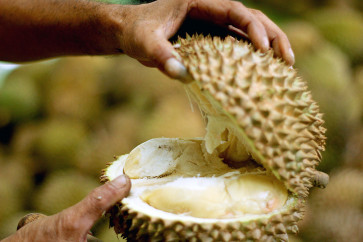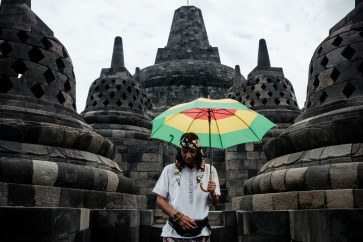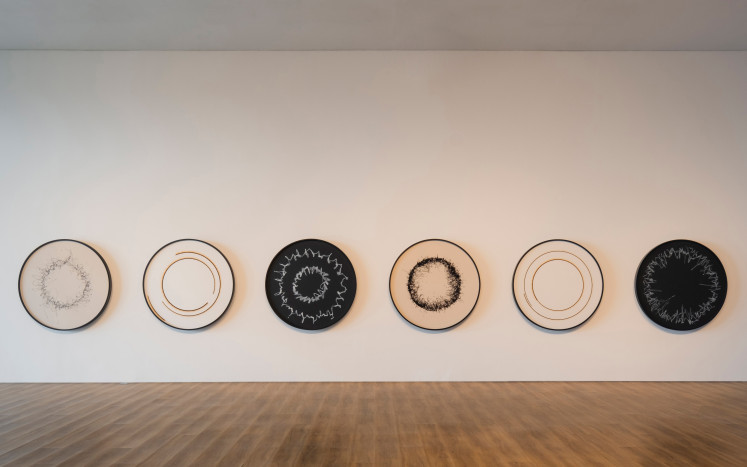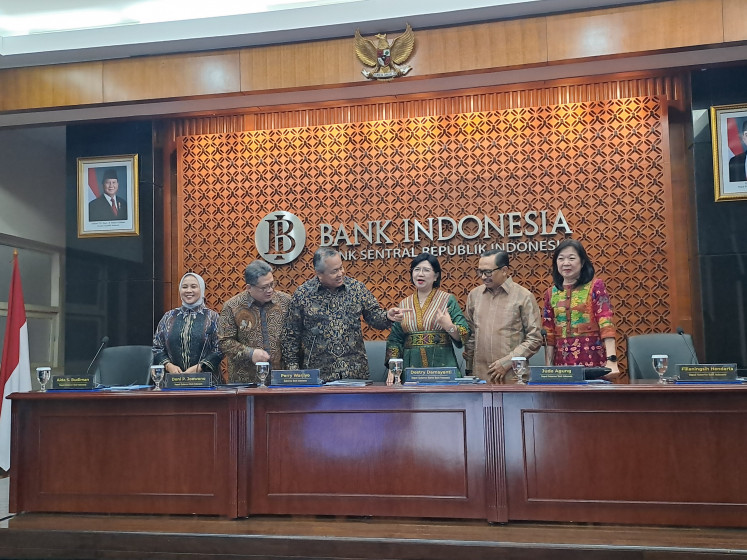Popular Reads
Top Results
Can't find what you're looking for?
View all search resultsPopular Reads
Top Results
Can't find what you're looking for?
View all search resultsThousands flock to Semarang night market to celebrate Chinese New Year
Held for the 15th time in the capital city of Central Java, Semarang's night market is popular with both ethnic Chinese and Javanese Indonesians. Thousands visited the market over the weekend.
Change text size
Gift Premium Articles
to Anyone
A
head of Tuesday’s celebration of Chinese New Year, Chinese-Indonesians in Semarang set up the Pasar Imlek Semawis (PIS) night market from Friday to Sunday.
Held for the 15th time in the capital city of Central Java, the night market is popular with both ethnic Chinese and Javanese Indonesians. Thousands visited the market over the weekend.
Visitors found Jl. Wotgandul Timur abuzz with sellers and buyers of Imlek-related accessories and food.
"To me, this market is always interesting; it is our signature of culture as Semarang residents. I always make time to come here," said one of the visitors, Agnes, on Sunday.
Semarang Chinatown Community for Tourism (Kopi Semawis) chairman Harjanto Halim said the market aimed to rejuvenate Chinese cultural traditions when welcoming Imlek.
Read also: Colorful market in Semarang welcomes Chinese New Year
"Jie Kao Meh is Semarang Chinatown's traditional way to welcome Imlek, where Chinese-Indonesians purchase prayer paraphernalia and eat together with their extended families at the Gang Baru Market, which is open until midnight," said Harjanto.
Meanwhile, Semarang Mayor Hendrar Prihadi said: "This event is one of our tourism calendar events that attracts not only Semarang residents but also people from outside the city. Since former president Megawati declared Imlek a national holiday in 2003, people from outside Semarang will come to this city to attend this market."
Dozens of artistic performances were staged over the weekend, including the barongsai and liongsamsie dances as well as modern art and contemporary dances.
As one of the highlights of the event, the night market served dinner on a long table called the Tok Panjang. Pasar Imlek Samawis event chairman Ocha Mattias said at least 400 people had been invited to the dinner, including residents, artists, administration officials and other local figures.
"The Tok Panjang dinner serves as a symbol of harmony and kinship between people of Chinese and other ethnicities," he said.
Guests were served teh serbat (herbal tea), a concoction of 20 herbal plants, shrimp broccoli and radish soup as an appetizer, followed by nasi ulam bunga telam (a Malaysian and Singaporean-Chinese steamed rice dish with various herbs) as a main course, cincu sirup mapel (maple syrup dessert) for dessert and rounded off with Kopi Alam-style coffee.
Nearing Imlek, dozens of temples in the Chinatown area have been spring-cleaned, such as Kwan Im Ting near Bale Kambang in Gang Belakang. Built in or around 1746, it is regarded as the second-oldest Chinese temple, after the one in Gedung Batu, Simongan. (kes)











